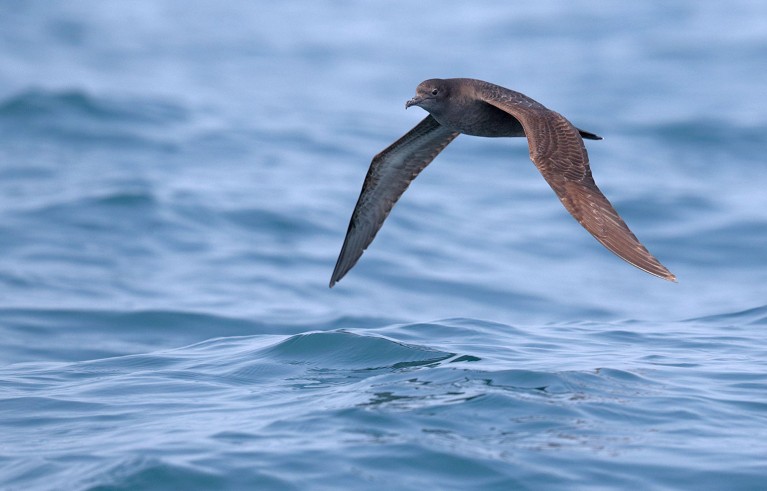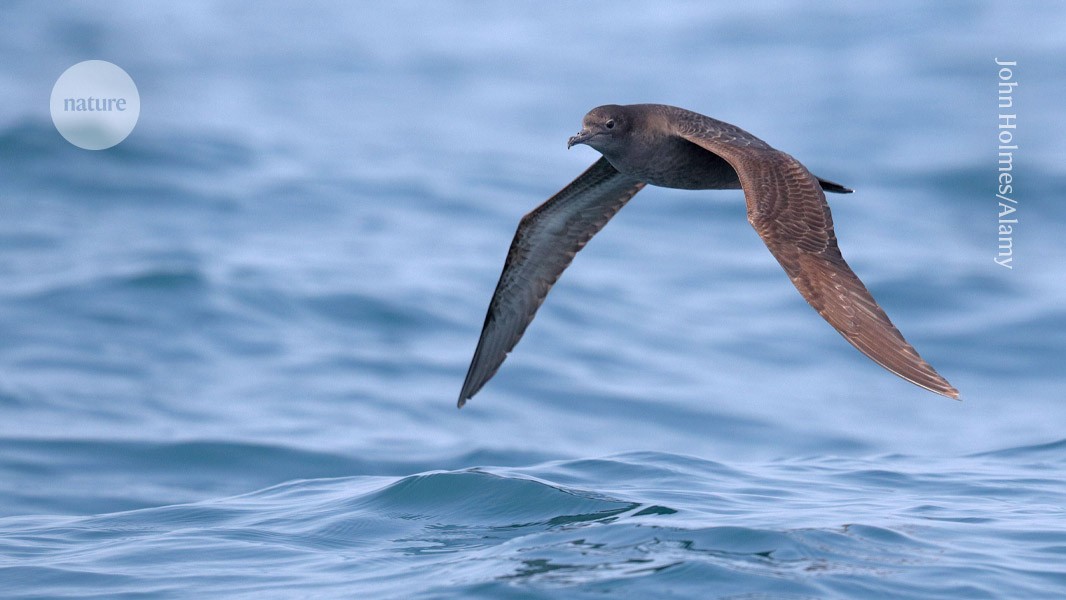
Scientists have started swabbing short-tailed Shearwater (Ardenna tenuirostris) for evidence of bird flu. The birds are migrating from the northern hemisphere to Australia.Credit: John Holmes/Alamy
Australia and the rest of Oceania are the last regions free of the highly pathogenic strain of bird flu that has caused mass mortality in birds across the world and a massive outbreak in dairy cattle in the United States. Why animals in the southern region have so far escaped infection is a mystery, but scientists have several theories.
For one, Australia is geographically isolated and doesn’t import live poultry, says Frank Wong, a virologist at the CSIRO Australian Centre for Disease Preparedness in Geelong. Many of the countries’ birds are endemic and do not migrate to regions where the virus is spreading.
But the virus’s arrival in Australia is “a matter of when, not if”, says Michelle Wille, a virologist at the Centre for Pathogen Genomics at the University of Melbourne, Australia.
Bird survey
Wille thinks that long-distance migratory shorebirds and seabirds that come from Siberia and Alaska through southeast Asia to Australia are most likely to carry the virus into the country.
This week, Australian scientists, including Wille, started swabbing the first of nearly 1,000 migratory birds for the virus. Over the coming weeks, the team will capture wedge-tailed shearwaters (Ardenna pacifica) and short-tailed shearwaters (Ardenna tenuirostris) as they migrate from the northern autumn to the southern spring. At night, shearwaters sleep in burrows and are relatively easy to grab. The researchers will swab the birds for the virus, and take blood to test for antibodies that will reveal previous exposure. They will be testing for the H5N1 clade 2.3.4.4b in particular, which has caused mass mortality in birds and some mammals.
To swab the birds, the researchers will travel to seven locations across Australia, as far apart as Broome in the northwest, Lord Howe Island in the east and Phillip Island in the south.
Deadly ducks?
Wille says another possible route for the virus is through ducks. Scientists think migrating ducks and geese in other parts of the world can spread the disease without succumbing to it.
That’s because ducks’ epithelial cells have a sensor, known as RIG-I, that detects an invading influenza virus and triggers an immune response that usually fends it off. Kirsty Short, a virologist at the University of Queensland in Brisbane, says ducks might have evolved such defences in Asia from repeated infections with many less-pathogenic forms of the virus, giving them pre-existing immunity. Although they don’t get sick from H5N1, they can still pass it on, and ducks congregate in lakes and ponds with other birds, increasing the chances of disease spread.
Isolated ecosystems
Another reason that Oceania is currently free of the virus is that the region’s ducks are endemic and they don’t tend to migrate overseas.
This isolation is partly explained by a biogeographical division called the Wallace Line, first described by naturalist Alfred Russel Wallace in 1859, which runs through Indonesia. Many animal species tend to stay on one side of the line or the other, and because of this isolation, the fauna on each side are distinct. Michael Andersen, an evolutionary biologist at the University of New Mexico in Albuquerque describes this phenomenon as “one of the great mysteries” of the world.
The sharp division might also mean that the virus is not adapted to animals east of the Wallace Line, says Wong. “Avian influenza viruses, including this high-pathogenicity avian influenza virus, are particularly well-adapted to certain species,” he says. Birds in Australia could have a genetic make-up that circumvents the usual infection route for the virus, but no one has yet tested this hypothesis.
Although many duck species are short-distance migratory birds and tend not to cross the Wallace Line, some species — including Pacific black duck (Anas superciliosa) and spotted whistling duck (Dendrocygna guttata) — do, and Wille thinks they could introduce H5N1 to the region.
If the virus is detected, government veterinarians will immediately move in to cull the affected population, which happened when H7N3 and H7N9 strains of the flu were detected in Victoria in May.
Short says that, when it happens, the effect on Australia’s birds, mammals and ecosystems is unknown, but many species are probably susceptible. “It’s a big research gap,” she says.


